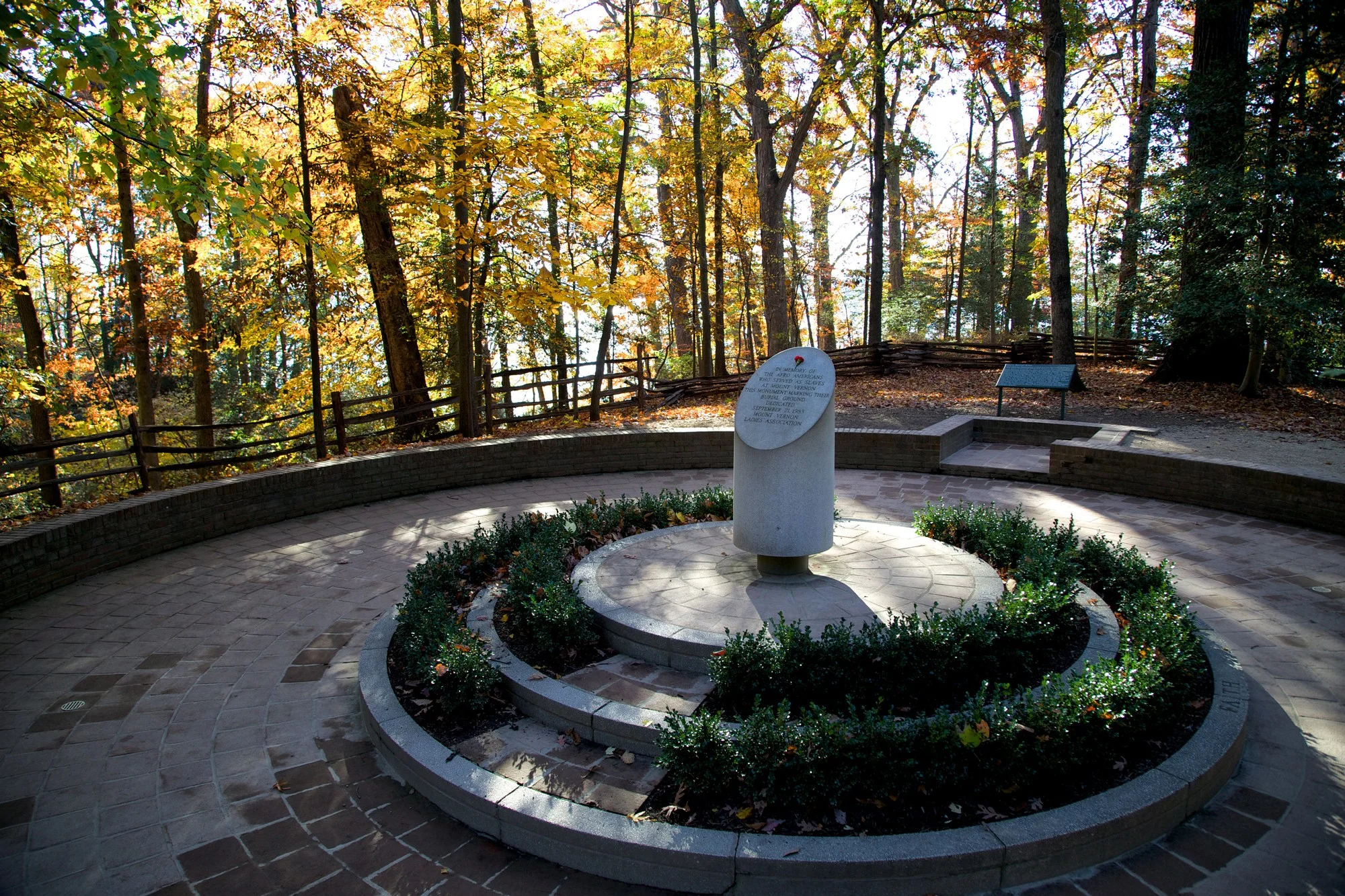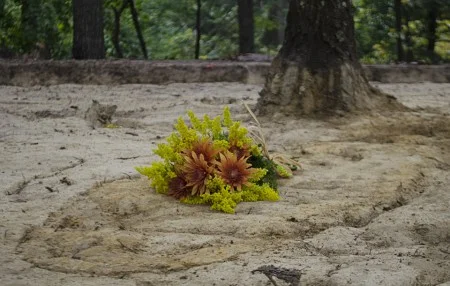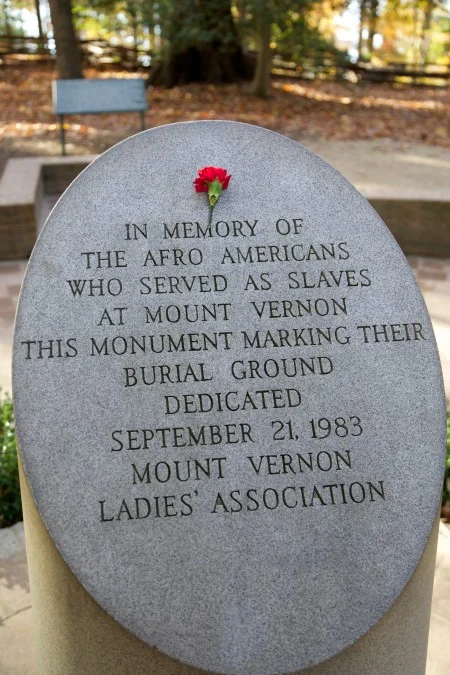Despite the volumes of papers and letters that George Washington kept, we know very little about the history of the sacred wooded area thought to be the resting place for dozens of African Americans.
In fact, during Washington’s lifetime, the burial ground is never mentioned, leaving a question as to when the woods started to be used as a burial ground. We do know that at least in the 1790s, the enslaved carpenters were constructing coffins.
Graves in the African American Burial Ground at Mount Vernon are unmarked, but we have the names of a few individuals thought to have been laid to rest there, including Frank Lee, Washington’s butler. Lee was freed according to the stipulations of Washington’s will and remained at Mount Vernon until his death in 1821.
William (Billy) Lee, died in 1828, just a few years after his brother Frank. William Lee served as George Washington’s body servant throughout the Revolutionary War and was the only enslaved person freed outright in Washington’s will. Like his brother, William Lee remained at Mount Vernon until his death and may also be buried in the burial ground. In fact, Lee’s grave site may be the one mentioned in an 1846 visitor account. “One of the servants pointed out that [grave] of Washington’s favorite servant, who was with him in his campaigns…” The visitor also remembered seeing a recently dug burial enclosed in a fence, that of “a favorite servant, an aged colored woman.” The visitor concluded that though “there are many graves in the grove,” the “humble” burial ground was not “a mournful spot.”
In 1863, West Ford, longtime servant of the Washington family, died at Mount Vernon and is thought to be the last individual buried in the burial ground. Ford was freed in 1829 and continued to work at Mount Vernon for the Washington family.
What else do we know about the burial ground?
Caroline Moore’s account of her visit to Mount Vernon on April 30, 1833, provides our first eyewitness account of the burial ground. She wrote, “Our guide first took us to the tomb where the remains of General Washington are now interred. They were removed from the old tomb about 3 years since ... Near his Tomb, you see the burying place of his slaves, containing 150 graves.” Just a few years later, in 1838, another visitor mentions the burial ground with 100 graves. We believe that the narrow ridge south of the Washington family tomb could accommodate 100 to 150 burials.
The earliest and only known historical map of the burial ground was printed by Charles Currier in c. 1855. The key for number 21 reads, “Negro Burying Ground” and depicts 12 graves in a fenced-in plot. Though we believe this map is a stylized depiction of Mount Vernon, it may suggest that visible traces of the burials had begun to disappear.
The burial ground has been memorialized twice in the 20th century. In 1928, the Mount Vernon Ladies’ Association became concerned that the unmarked burial ground for the enslaved would be forgotten and “recommended that a simple marker, suitable inscribed, be placed on this consecrated ground.” We believe this marker to be the earliest of its kind on a historic plantation. By the 1980s, the burial ground site had become overgrown and the 1929 memorial was lost amongst unchecked vegetation. Efforts to create a more visible marker culminated in the memorial you see when you visit the site today.


